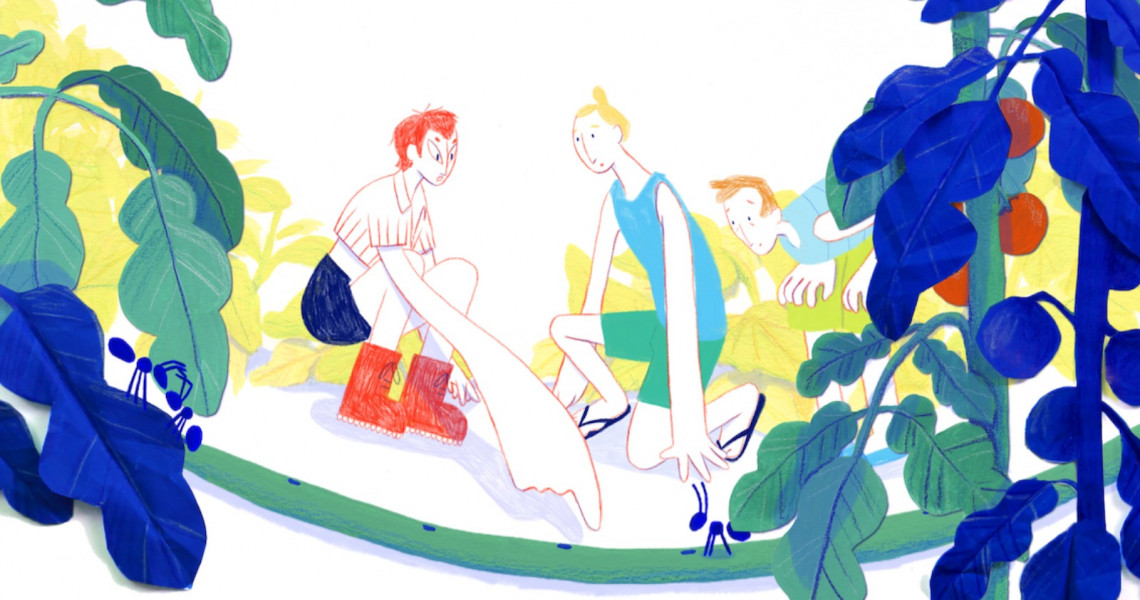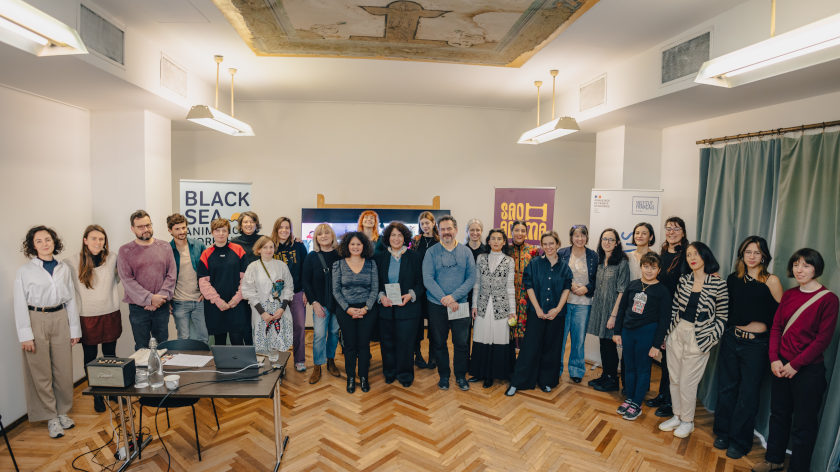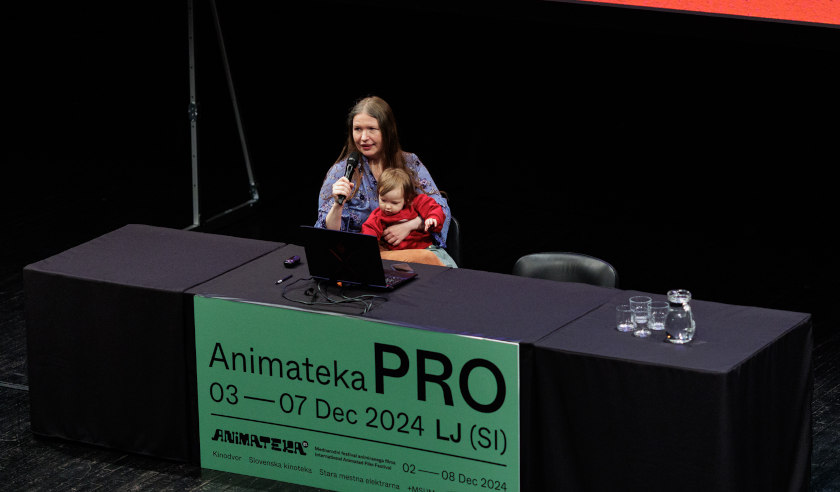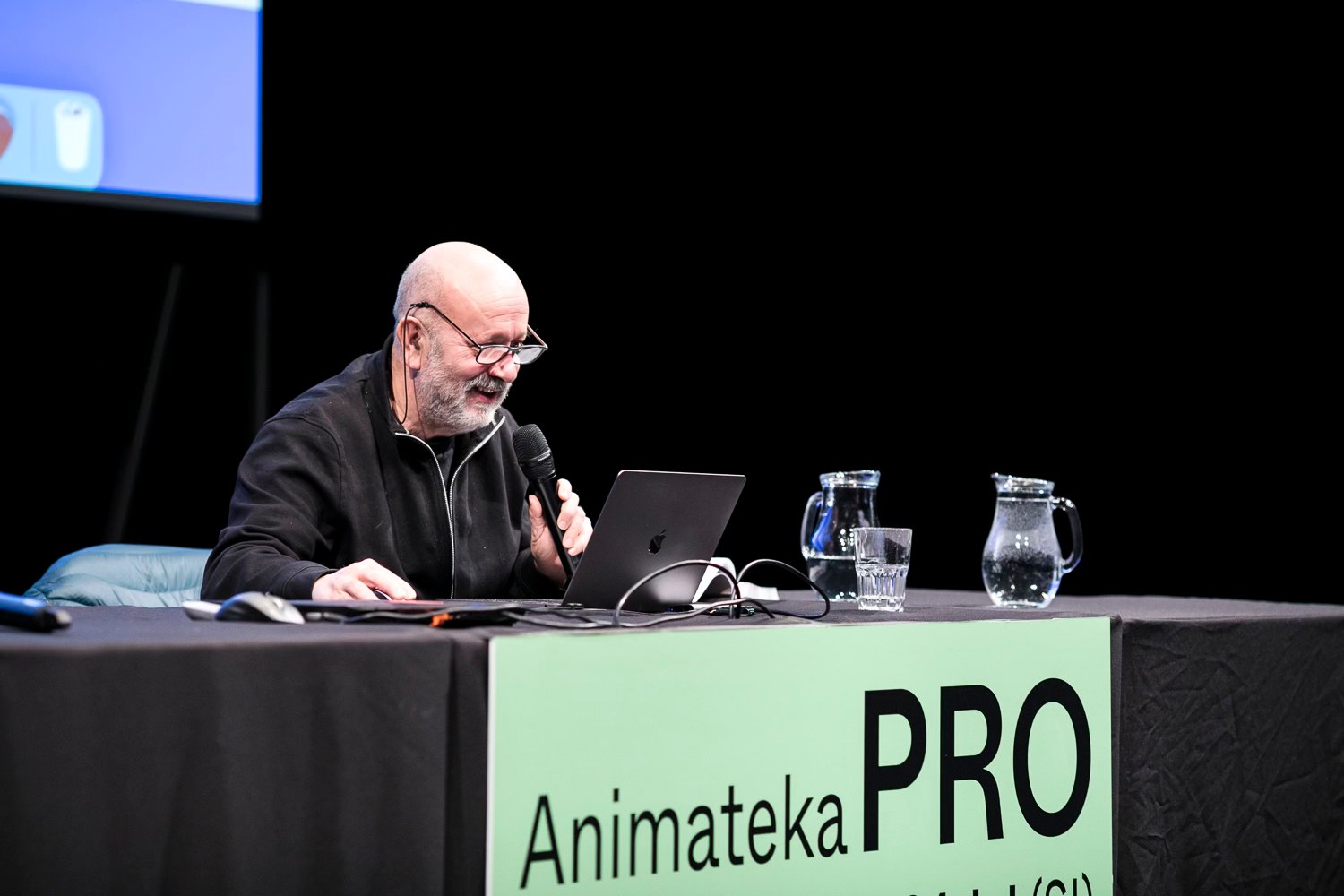Farewell to the Rooster: Chinese Animation in the 2017 Season
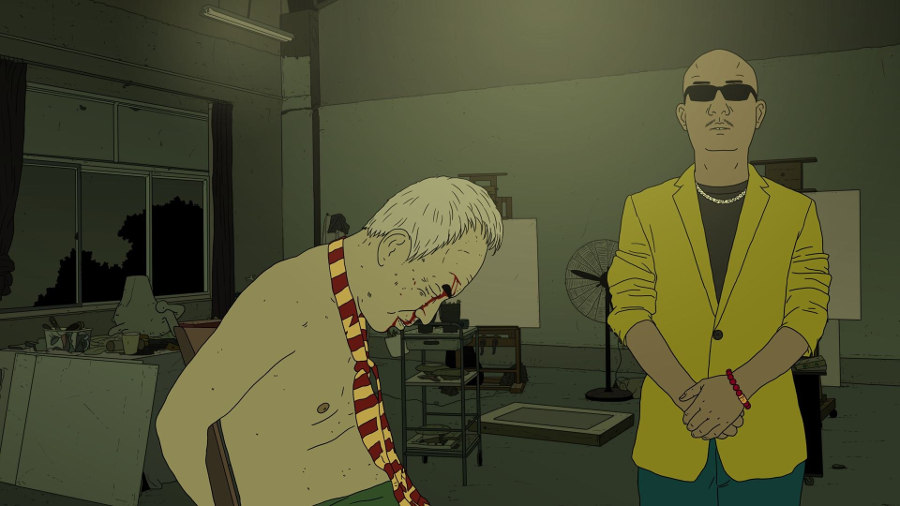
The year 2017 (a year of the Rooster) was symbolic for the Chinese animation. Exactly 60 years earlier, this art has been officially endowed with specific ideological goals and definitions what has determined aesthetic, technical and communication pursuits of Chinese animators. The mass and alternative production landscape has completely changed ever since and even if the notion "Chinese animation is rich and diverse" may sound as a truism, it is hardly possible to find more adequate brief summary of multitude threads, motifs and stylistics that have been developed and mastered by contemporary Chinese authors.
In 1957 Te Wei, the most famous artist of the classic era, raised a telling and succinct slogan on the walls of the Shanghai Animation Film Studio (SAFS): Road to minzu style. Minzu (民族) – the national style – is an innovation in terms of poetics and aesthetics rooted in the cultural traditions of classic China and its folk cultures, eventually it is a state of mind of the artists and the spectators, a readiness to enjoy and enliven tricks, attractions and romanticism of the silver screen, despite of any experienced hardships, traumas, disillusionment, pain. Formally it can be found in animation techniques rooted in essentially Chinese forms of artistic expression (ink-and-wash painting animation, Chinese cut-out animation) or narratives based in Chinese traditional performative arts and literary discourses (Beijing opera, classic literature, folk tales of various minorities and proverbs). As an experience that brings cultural understanding it can only be chased and fulfilled from time to time by the most talented filmmakers. The 20th century minzu has left an animation scene along with Te Wei's master of qin (traditional string instrument) from The Feelings from Mountains and Water (1988, Shanshui qing). But the sensitivity concentrated around cultural and historical identity still remains the main reference for the artists of Chinese animation cinemas. We'll focus here on the contemporary vision of minzu as created by the artists from mainland China and exhibited in Western festival circuit in a year of the Rooster.
{gallery}galleries/china2017{/gallery}
All the roads led to Annecy
The admirers of the Chinese animation art spent half a year awaiting festival in Annecy where mainland China was a guest of honor, while the other half was dedicated to the reflection and discussion of what has actually happened in France. The mise-en-scène of Annecy's tribute to Chinese animation industry and artistic scene followed the pattern developed and sustained in contemporary China. A strict division (with almost no exceptions) between art and market is noticeable and suggestive. It is a logical consequence of cultural politics assumed in post-transformation China. The grand festival of Annecy replicates this pattern even if obviously for different reasons. The Festival and the Mifa markets are two different worlds (even physically separated by quite long walking distance). Their participants mingle from time to time but do not necessarily meet in the cinema halls. They come to Annecy for different reasons and Annecy, as an organization, provides them with different content. It is a typical distribution strategy, i.e. one that feeds itself and expands on the grounds of huge business but builds social value and recognition through appreciation of subversiveness.
Art in a sense of formal experiment or status quo-challenging content has been consciously separated from the means of mass-accessibility – ghettoized, if you will. Artistic animation retrospectives have been presented with all the honors at Annecy's cinemas while the Château d'Annecy hosted an exhibition that comprehensively covered contemporary art and gave general overview on history of animation in China. Retrospectives and exhibition (events curated by Marie-Claire Kuo Quiquemelle and Gerben Schermer, Lucie Cabanes and Maurice Corbet) followed chronological approach based on the turns of the decades, while in the contemporary part the curators have attempted to grasp the diversity along common key, be it generation or school. Additionally the artists Sun Xun, Chen Xi and An Xu received slots dedicated solely to their art work.
Good Morning China
Shortly before Annecy started a certain controversy electrified social media and professional (on-line) press – Liu Jian's Have a Nice Day (Hao jile, 2017) had been withdrawn from the feature-length competition programme and the decision made way back in Beijing was accepted by the festival's organizers. How obviously political this decision has been can be proved by the fact that week before it was possible for the international audience to watch Liu Jian's film in Zagreb, and a month later on Animator in Poznań, not to mention many other screenings in Western theaters. But the state and joint-venture institutions invested a lot in Annecy in terms of finances, work-force, promotion, and allowed accessibility for a wide group of professionals to visit European Mekkah of animation. In this case the so-called cultural diplomacy was played in a model manner. A goal of spectacular abroad presentation of domestic production was achieved, moreover it was witnessed by thousands, among them many China-based professionals, freely moving around this ultimate bourgeoisie resort with a firm conviction that the state remains an owner of the discourse and its iron fist may decisively strike despite of general atmosphere of strengthening international cooperation. Liu Jian (born 1969) brilliantly plays with film genres balancing between gangster film, dark comedy and melodrama, and critically observes Chinese society across various strata. Bitterness is detectable, each portrayed generation seems lost in the reality that suspends necessity of thinking and revising. In the noirish maze of cheap hotels, food stalls, dirty Internet cafes, streets and pavements sinking under regular garbage and meals' leftovers, the characters engage in criminal and love affairs. Dominance of the market and consumerism based in absurd three freedoms is ironically discussed by Liu Jian. “Freedom of the farmer” refers to the almost limitless possibility of purchase and selling at will. “Freedom of the supermarket” appeals to those who want to buy anything at any cost. “Freedom of the on-line shopping” instigates potential to exploit all the resources stored in virtual world. Liu Jian asks what's left for the individual who has accepted and made use of such consumerist freedoms, be it uneducated man struggling to provide plastic surgery for his loved one, or a top-selling visual artist who is strongly involved with the criminal underworld. For his tendency to remix or recycle iconic motifs and figures of popular culture (communist propaganda, innocent folk imagery or current mass-production), Liu Jian can be called akin to Quentin Tarantino despite medium preferences. But unlike the American director, the Chinese enfant terrible employs rigid anti-aesthetic strategy: with the exception of the revolutionary/pop sequence that somehow evolves beyond the actual film plot, he uses visual reductions, simplified character and background design, even limits the choreography and dynamics of movement. Simon Abrams, the contributor of rogerebert.com, writes:
you can never really forget that you're watching an animated movie when you watch Have a Nice Day,
and though we can rather agree that forgetting animation is not a point of watching animation in the first place, there is something to Abrams' intuition. Surreal and cruel reality-check presented by Liu Jian along with each mean applied to its creation makes us realize and fear the burden of an artificial life, fake drama and dead-end escapism awaiting us in the cinema halls and shopping malls alike. Let's stay tuned for Liu Jian, his new project School Town is in production.
“First Independent Generation”
Observing the Chinese independent animation of the 2010s one may discern a true conceptual revolution with numerous leaders on its forefront. In many cases they can be described as authors-in-transit, circulating, creating, and exhibiting all around the world. But this is just one angle to look at it, another highly interesting issue is a concept of transitory and fluctuating medium that Chinese authors share even if collective manifesto is non-existing or at least hard to find. Advanced digital animation technology becomes a creative tool, complementary to organic or traditional artistic material as in the case of Sun Xun (born 1980, engraving, woodcut, ink painting), Lei Lei (born 1985, photographs, negatives, reused graphic design), Wang Haiyang (born 1984, calcium, charcoal, chalk, sandpaper), Ye Linghan (born 1985, ink, ink-wash and charcoal), Geng Xue (porcelain), or Ding Shiwei (born 1989, objects of biological nature, photography, video). Recreation of the material within the use of scanners and softwares intensifies and elevates the very nature of cinematic reproduction. Further on the artists don't restrain themselves from experimenting with the exhibition practices. Multi-screen, multi-channel and interactive installations frequently add supplementary qualities to the videos or films presented in the screening rooms. And there is another kind of transition pursued by the artists, an equation between an act of creation and an act of spectatorship.
Wu Chao (born 1977) and Xia Weilun's (born 1978) installations Happen (2014) and Nothing (Xuanfu, 2016) are displayed on several screens positioned in a dark labyrinth-like gallery space. Proposed duration of the experience (approx. 30 min) assumes spectator's readiness for immersion and contemplation. At the same time it allows for construction of completely unique patterns in integration of the visuals according to individually developed perception habits (embracing both cognitive routine and readiness for incidental reception). Finally, both Wu Chao and Xia Weilun in 2014 initiated a project that remains active, and in its fullest meaning, vital, up until today. “Awakening DOC [Disorders of Consciousness] Patients” has been created as an act of disagreement with the depersonalized conditions experienced by DOC patients, unconscious subjects of medical procedures. Videos realized by Wu and Xia are created after the conduct of in-depth interviews with families of the patients so they include materials that could revive most meaningful sensations. Sounds and images provoke energy, stimulate patients' organisms to feel sexual and food desire, eventually to experience comfort. The artists have launched two “studios for awakening” in Beijing and Guangzhou, plan to open 2-4 more as they declare 3 successful awakening out of 100 individual programs they're running.
Lei Lei (aka Ray Lei), a recently appointed CalArts teacher with an image of a “forever young” drifter in a visual stratosphere, claims that above all he strives to escape labeling of his artistic approach, media he uses and art he creates. Whether he plays visual tricks on old photographs destined to vanish on flea markets and in garbage (Hand colored no. 1, 2015, Recycled, 2012), or covers of the books influential in the 1980s and 1990s among the Chinese visual artists and critics (Books on Books, 2016), Lei Lei confronts himself and the viewers with the problems of collective remembrance and forgetting. There are plenty of levels that could initiate interpretive activity: full subjectiveness of the material (such as a posed photograph in the first place); the material's role as a vessel of personal memory turned throughout the years into complete anonymity on the one hand and its status of the “historical evidence” on the other; distortion and corrosion of the material; a sense of longing for an old media and understanding that their symbolic meaning can only be revived through new visual procedures of reconstruction and revaluation. He also neutralizes symbolic chaos within daily routine and artistic communication. An installation One Man Animation's Studio held in Beijing in 2016 gives an individual visitor
a moment of calmness and peace in this city filled with reinforced steel and concrete buildings,
experienced in a relatively small size glass box, filled with screens displaying looped videos and located inside splendid building in the city center.
Exploration of the interactive methods of creation and artistic communication is obviously correlated with the means developed within video games and new media. One of the pioneers of an “artistic translation” between video-art, animation and video games, Feng Mengbo (an author of the famous Long March Restart, 2008, and Q3, 1999) has come back with the project Mortal Kombat that integrates holographic video game, authotematic approach to filmmaking (the characters in the games are actually played by the actors who are filmmaker's friends engaged in interactions with him) and new media interactive feature (the actors' street fights are controlled by the player). This project was presented at the exhibition “Digital Revolution” of Digital Barbican and after UK inauguration, it opened in China in January 2018. “Digital Barbican” also exhibits AR work Eyes of Neo by Wu Juehui (born 1980), a teacher at the Tsinghua University in Beijing whose interests in convergence between new media and science dates back to 2009. For more business-oriented VR and AR enthusiasts it should be interesting that Kevin Geiger, former Disney CG artist and Disney's China Vice President and Head of Creatives, in 2016 founded International Animation & Virtual Reality Research Center (iAVRrc) that collaborates with several academic institutions. Despite of the rigid censorship and administrative restrictions imposed on VR producers, Geiger works his way out to encourage development of professional content production in VR, AR and mixed reality. It seems like the governmental bodies are cautious about possibilities generated by new media realities what forces the producers to limit their interests to software. Yet, the seed has been planted already. Good reviews have been received by young author Ji Wenjun who worked with UE4 on the production of Wake UP (2017).
The works of Chinese independent artists require great interest and in-depth study that goes far beyond modest aims of this article. Annecy 2017 catalogue may serve as a guide-book but it's also worth referring to the curatorship of the Chinese Independent Animation Film Forum (CIAFF) held annually since 2012 in fall in Beijing. Only a quick look at the number of participants in competition and special presentation sections reveal how dynamic this movement is. Spectacular interactive experiments are just a part of this story. The names of Chen Xi (born 1977) and An Xu (1977-2017), Shen Jie (born 1989), Mi Chai (born 1985), Qiu Anxiong (born 1972), and many others, should be also mentioned as they are creators devoted to animation and video, contemporary interpretors of ink painting and animation traditions with exquisite understanding of editing and narrative traps and thrills.
The process of crystallization of artistic and philosophical approaches seems to be parallel to the evolution of animation education in Chinese arts academia. In 2007-2016 Xue Yanping (born 1975), an animator, educator and a real embodiment of a laoshi (老师,teacher), released 4 episodes of an animated documentary about the conditions and directions of the industry in China, Silence within Noise. An Account of Chinese Animation in the 21st Century. Among many subjects touched upon by Xue Yanping there is a chapter dedicated to the teaching staff at the universities overcrowded with the students who are disappointed in the lack of clear career directions (episode Chinese Animation Education). Collage sequence edited in fast tempo that is keeping up the pace of Lei Lei's looped quasi-rap, combines newspaper clips, complex background designs with wide color range and diversified sceneries, and revolves around the failed efforts of the teachers who loose their mentorship abilities and humiliate themselves in front of the students. The latter are portrayed as cogs in a badly designed machinery of education market. In many cases, currently admired artists have become teachers themselves by now. The number of young artists genuinely interested in independent thinking and creation may indicate that they do not hear anymore such remarks as those remembered by Lei Lei from his college years: excellent students should learn narrative animation, ordinary students should learn experimental animation.
It should be mentioned that in 2017 Chinese animation academic and artistic world lost a great artist and a teacher. An Xu (1977-2017), a long-term collaborator of Chen Xi, co-author of the films such as A Clockwork Cock (Mang zhong, 2009), Grain Coupon (Shuang jiang, 2011) or The Poem (Da han, 2015) died in May that year. The newest Chen Xi's film dedicated to memory of An Xu, A Fly in the Restaurant, will premier in 2018.
Recognized artists of the “First Independent Generation”, similarly to the pioneers of the 1950s, explore possibilities of animation and new technological media with a great dedication to the working process and, as I believe, they are eager to revive cultural richness of the historical momentum they experience. That is to say they strive to dig out and reveal meanings, symbols, and values inherent in Chinese culture, reconstructed in the process of revolution, and covered with emotional and social indifference in recent times. It is a generation born in the 1970s and 1980s, they have experienced a thunderstorm of technological and industrial advancement, chances and threats of international communication, social alienation inevitable in a system that employs certain modes of capitalism. They have witnessed the fall of ideological doctrine and re-consolidation of an authoritarian system that embraced digital media as a convenient mean applied in new forms of mass-control. They do not speak directly about the politics for “the heaven is high and the emperor is far away” while here-and-now, in their closest vicinity, tremendously significant things take place.
Film Market with Chinese Characteristics
Rapidly growing and impressively entering the mode of transnational production, Chinese animation industry requires an expertise in global economics as well as comparative overview that would take into consideration relations between US, Japanese and French markets (just for a start). Throughout the decades of the 1980s and 1990s animation (along with the whole state and the nation) has undergone profound transformation of ideological and economic nature. In the Maoist times animation was a useful tool in a top-down imposed pursuit for an expression of Chinese cultural superiority. In the Deng's era of opening and reforms the Studio in Shanghai (followed by newly emerging enterprises) entered into market competition with its foreign counterparts and for long time – to a greater or lesser success – Chinese producers have been seeking financially and artistically satisfying aims and means, locating them mainly in youth entertainment. The new leaders centered their doctrine on a harmonious development of society and economy as well as re-recognition of cultural heritage and traditional virtues in a spirit of Confucius thought. The manifestations of such ideological tendency fill the silver screens, generate interest of global producers and transnational stakeholders, not to mention impressive profits. A bulletin "The Chinese Film Market Magazine" introducing Chinese presence at the Mifa Annecy lists exhibitors aiming for quantity in terms of offered service and high marketing value, for example:
Beijing KAKU Media Co. Ltd ("one of the first professional animation satellite TV channel in China (...) forging a national top professional channel of children service"), Versatile ("an integrated entertainment group (...) its business ranges widely from original content designing, animation production, live action video production, audio programs, to related industries including books, toys, apps etc."), China Film Animation Ltd. ("its core business involves film and television projects investment and development, animation film and television production, film and television distribution, animation characters licensing and merchandising, game development and production, and cartoon character branding") or Xin Yue Pictures Corp. Ltd. ("integrated marketing services for films (...) have led and participated in more than 40 films, gaining a high gross of more than 3 billion yuan").
However, over the years artistic failures of the big budget productions cost the producers a lot of sleepless nights. A figure of Monkey King, an everlasting hero of Chinese animation since its earliest days, can serve as a good example here. Following re-editions of the Monkey King's adventures (either fully animated or combining live-action with VFX), almost every time seemed to bring reasonable profit for the producers and distributors (and please mind that Chinese distribution market has very rigid quota system imposed on foreign productions) but they have completely failed outside cultural circles familiar with the Sun Wukong's story. An attempt to refresh collective memory of the most famous worldwide classic film (Wan Laiming's Havoc in Heaven from 1961-1964), Monkey King: Uproar in Heaven (Tiangong, 2012, dir. Su Da, Chen Zhihong) put contemporary animators in the position of the perfect copyists, tools used in an operation of faithful transposition of vintage imagery into digital one. It has stirred an interest among the historians of the Chinese animation but it is a quite limited target group. Whereas the independent authors have re-conceptualized minzu intuitively and relatively quickly, the decision-makers of the professional industry seem to remain stuck up until now. Big Fish and Begonia (Da yu hai tang, 2016, dir. Liang Xuan, Zhang Chun), if followed by works similar in atmosphere and achieved cinematic pleasure experience, might mark the turn but at this moment it is too early to declare any strong statements. In this gentle CGI tale of the sacrifice in the name of humanity that incorporates storytelling patterns circulating in folk and popular culture, a mythical aura of the underwater hereafter is brought by fluctuations and vibrations of detailed landscape where the ocean mirrors heaven.
The Year of the Dog
2018 will pass under the sign of the Dog. In the Lunar calendar it is traditionally perceived as a time for strengthening interpersonal relations and experiencing positive changes in professional and private life. Chinese artists and producers probably wish themselves today financial stability, domestic and international successes, and tranquility in relations with the official bodies. Let us add to this wish-list tones of inspirations that would help them discovering new means of telling the oldest and most exciting story of Chinese animation, the one about passion for art and innovation expressed by individuals, accepted by collectives, and pursued with all the power and dedication because and despite of the cultural and historical conditions they have inherited.
Instead of the conclusion please enjoy animated Chinese Zodiacs and the sounds of Shanghai Restoration Project...




